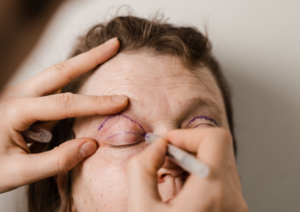
What to Know Before Considering a Facelift: Procedure, Recovery, and Common Questions
Facelifts are a common procedure for people looking to reduce signs of ageing, like sagging skin, deep lines, or a loss of facial definition. While it’s not about changing how you look, a facelift can help you feel more confident by creating a fresher, more rested appearance. If you’re considering one, it’s important to understand what the surgery involves, what recovery looks like, and whether it’s right for you.
What to Know Before Considering a Facelift?
Before deciding to undergo a facelift, it is important to understand what the procedure involves, who it is suitable for, and what kind of recovery to expect. A facelift is designed to reposition and tighten facial tissues, often addressing concerns in the lower face and neck. The procedure does not change your fundamental appearance but aims to create a more youthful, natural look.
All surgical procedures come with potential risks, and it’s essential to have realistic expectations and a clear understanding of the process. Our goal is to provide you with factual, balanced information so you can make an informed decision in consultation with your surgeon.
Who is a Good Candidate for a Facelift?
A facelift may be appropriate for individuals who:
- Are in good general health
- Have noticeable sagging in the lower face and neck
- Are non-smokers or willing to stop smoking before surgery
- Have realistic expectations about the outcomes
- Seek long-lasting improvements rather than temporary fixes
It’s important to remember that age is not the sole factor—rather, your skin condition, bone structure, and personal goals determine your suitability.
The Facelift Procedure: Step-by-Step
Understanding what happens before, during, and after the procedure can help you feel more prepared and confident about your decision.
Pre-Surgery Consultation
Your journey begins with a thorough consultation. Your surgeon will discuss your medical history, aesthetic concerns, and desired outcomes. Photographs may be taken to help plan the surgery and to provide a reference point.
You’ll also be given comprehensive information about what the procedure involves, the type of anaesthesia used, the expected recovery timeline, and any potential risks.
What Happens During the Procedure?
During the facelift, small incisions are made—typically around the ears and possibly along the hairline. The skin is gently lifted, and underlying tissues are repositioned. Excess skin may be removed before the incisions are carefully closed.
In some cases, you may opt for a neck lift to be performed at the same time to address jowls and loose skin around your neck. The goal is always a subtle, balanced enhancement that complements your natural features.
Facelift Recovery Timeline
Knowing what to expect during each stage of recovery can help you plan and support a smoother healing process.
Days 1–7: Rest and Initial Healing
Expect some swelling, bruising, and tightness during the first week. You’ll need to rest, keep your head elevated, and follow your post-operative instructions carefully. Any discomfort can usually be managed with prescribed medication.
Weeks 2–3: Swelling Subsides and Stitches Removed
Bruising and swelling begin to reduce, and you may start to feel more comfortable resuming light activities. Stitches are usually removed during this time, and your surgeon will check your healing progress.
Gradual Return to Normal Activities
Most patients return to work and regular routines after 3–4 weeks, although this can vary. Strenuous activities and heavy lifting should still be avoided until your surgeon advises otherwise.
Three Months and Beyond: Results and Review
By three months, the majority of swelling usually gets resolved. The final results become more visible, with improved facial contours and skin firmness. A review appointment will then be booked to ensure everything is progressing well.
Common Side Effects and Risks
As with any surgery, there are potential risks. These may include
- Swelling and bruising
- Numbness or tightness in the skin
- Temporary discomfort
- Scarring (which usually fades over time)
- Rare complications such as infection or delayed wound healing
Your surgeon will guide you through these risks and answer any questions during your consultation. Your safety and well-being remain our highest priorities.
Frequently Asked Questions
What is the best age to get a facelift?
The ideal age is generally in your 50s to 60s when signs of ageing, such as sagging skin and deeper lines, become more pronounced. However, suitability also depends on your skin condition, overall health, and personal goals, not just age.
Is a facelift painful?
Some discomfort is expected, particularly in the first few days. However, pain is usually manageable with prescribed medication and subsides as you heal.
What is the downtime after a facelift?
Initial recovery takes around 2–3 weeks, though it may take up to six months for all swelling to subside and the final results to fully settle.
Are facelift results permanent?
Facelifts offer long-lasting outcomes, but they do not stop the ageing process. Most patients enjoy their results for many years with good skincare and a healthy lifestyle.
How do I prepare for a facelift consultation?
Bring a list of questions, be open about your medical history, and have photos or examples to illustrate your goals if helpful. Avoid smoking and follow any pre-op instructions from your surgeon.
Will people know I had a facelift?
Skilled surgical techniques aim for natural, refreshed results. While close contacts may notice subtle improvements, the changes may not appear artificial.
How long does a facelift last?
Results can last 7–10 years or more. The longevity of the outcome depends on skin type, age, lifestyle, and other factors.
Considering a facelift?
Book a consultation with Dr Harbison or Dr Gibson to explore your options and receive personalised advice.
Our Surgeons
Recent Post

What is Melanoma? Causes, Symptoms, and Treatment Options

Types of Reconstructive Surgery and Their Role in Recovery After Injury

Understanding Trigger Finger: Causes, Symptoms, and Treatment Options

Ganglion Cyst: Symptoms, Causes & Diagnosis









